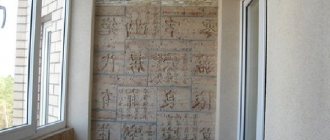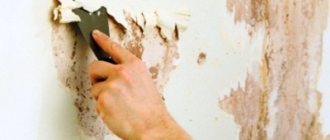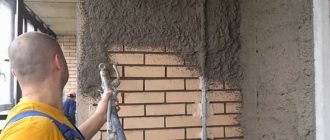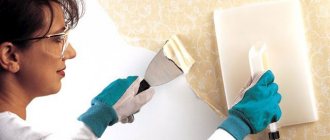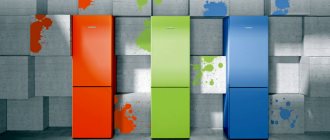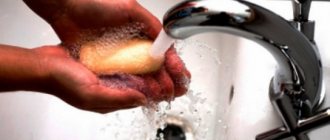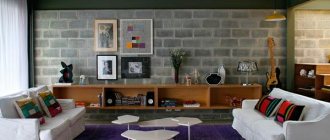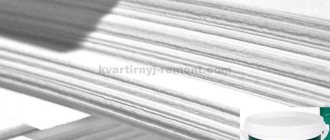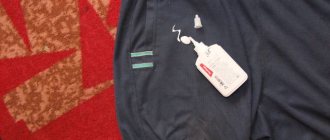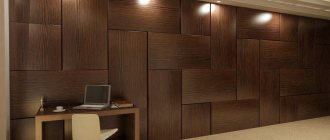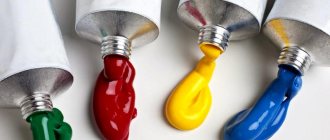Not so long ago, walls and ceilings in rooms began to be plastered using a decorative method, thanks to which you can achieve a beautiful and unusual design. Versailles plaster looks very beautiful on the walls, but the price of the finished composition is quite high.
This material will discuss how to create a similar texture on a wall using ordinary putty yourself with minimal financial and labor costs.
Decorative plaster - advantages and disadvantages
Finishing with decorative putty is used as a self-sufficient coating for walls or a base for painting. Used alongside wallpaper, this material represents a modern finish. Combining different types of decorative putty produces original effects. One of the advantages is the ability to prepare mixtures yourself. The following series of “advantages” are noted.
- Used as decoration, looks aesthetically pleasing.
- The coatings are unpretentious and can be easily cleaned using the wet method. It is allowed to use detergents. Practicality.
- The finish “breathes”.
- There is no smell, as well as harmful emissions.
- It does not crack, but only strengthens over time.
- The wall does not need to be pre-prepared. Texture and thickness determine the smoothing of irregularities and defects.
- Long service life with proper work and careful operation.
- Masking of defects and irregularities in the presence of textures. In this case, mixtures with cellulose are good.
- Versatile, the coating is suitable for all or many surfaces.
- Resistance to the environment, compliance with environmental standards.
The coatings are free of toxins and many are breathable. Putty can isolate noise. Decorative putty used for walls involves many aesthetic solutions. The room is decorated to your liking. The disadvantages are the high price for some types, as well as the complexity of implementation.
Finishing with decorative putty is used as a self-sufficient coating for walls or a base for painting.
Creating a decorative surface
The formation of decorative relief plaster is carried out in various ways. The main thing is to get the intended finished result that matches the project design.
Roller
Forming the relief using a roller allows you to get a predictable result; it is carried out immediately after applying the base layer. The relief pattern is created by the selected textured attachment from bottom to top. Make each subsequent pass by capturing the edge of the previous one. Apply the texture carefully, maintaining symmetry and distances when forming the pattern.
After drying the decorated layer, go over it with P60 sandpaper and correct the design if there are any overlaps. The formation of a finish of this kind involves subsequent painting of the surface 2 times - completely at once and the top of the relief with paint of a different tone at the end.
Another way to apply decorative plaster with a roller is to paint the base layer with a liquid mixture with added color or textured paint. In this case, immediately after drying, a relief pattern is obtained on the surface.
It is not recommended to make relief with a nozzle made of fleecy material. Purchase a ready-made plastic textured roller for this work.
Spatula
Most types of decorative plaster are made using a spatula to form the relief. This relies on the mixture adhering to the bottom of the spatula or trowel when it touches the surface flat. This is how the “fur coat” finish is formed. Pulling the trowel 5-10 cm in straight or wavy lines and then tearing it off the surface causes additional unevenness. Using these methods, a pattern of decorative plaster is formed. When the mixture dries a little, the peaks of the relief are smoothed out. In some cases, with a trowel or trowel, ornaments, flowers, and seams like brickwork are drawn on the surface.
Available means
By the principle of pressing a workpiece into the mixture or tearing it away from the solution, drawings of the most incredible shapes are created. Here the flight of imagination is limitless. This could be: crumpled thin or thick polyethylene, paper, a comb, a fork, a broom, even a finger. It’s impossible to list everything; there is a use for any item.
Stencil
A stencil according to the design is cut out of a sheet of cardboard, applied to the surface of decorative plaster or base layer, and secured with tape. Prepare the required amount of molding sand and fill the cut holes.
After the solution has completely dried, the stencil is removed, the resulting pattern is modified with a stationery knife and sandpaper P60, P120. The resulting relief pattern is painted 2 times with glazing compounds.
Features of putty and plaster, the difference between them
Decorative putty, like plaster, serves the same purpose - to make the surface smooth. The second composition protects the wall from dampness and has thermal insulation properties. It has a coarse-grained structure. In addition, plaster can decorate and perform an auxiliary function. Putty does not have the same degree of viscosity. By smoothing the planes, puttying does not change the volume. The mixture comes in initial and finishing types for quick sealing and smoothing.
Plaster can decorate and perform an auxiliary function.
Mixing putty
In this case, if a polymer composition of the required consistency is used, then the usual mixing of the components is carried out. In the case of using a dry mixture, you will need to use a bucket of the required volume, the appropriate amount of water, composition and auxiliary component. The mixture is first diluted and then thoroughly mixed using a construction mixer. Subsequently, an auxiliary component is added to give a decorative effect. At the end of the process, the composition is thoroughly mixed, after which you can begin to work.
How to make decorative plaster from ordinary putty with your own hands
A homemade version can be easily obtained from existing ordinary putty. First you need to disassemble the composition. The base is cement, gypsum, clay, acrylic, silicone. Do-it-yourself decorative plaster using ordinary putty is done by adding components. If the base is mineral, add sand and stone chips. Synthetics work well in polymer putties, giving the effect of leather and silk. Viscosity and adhesion are achieved by plasticizers, which impart elasticity.
Homemade mixtures usually include PVA glue. The simplest option can be prepared for interior work. The result largely depends on the application method. For example, the relief is done with strokes. To make the wall expressive, coarse-grained additives are used. Such imitations can be done with your own hands.
To create strength and elasticity, use PVA glue or deeply penetrating primers. They contribute up to 2.5% of the total mass.
A homemade version can be easily obtained from existing ordinary putty.
Preparing the walls
It should be understood that decorative plaster should be used only for a leveled surface, which is why the following algorithm of actions must be performed:
- level out all unevenness, and also remove debris and dust;
- the next step will be to apply the necessary primer;
- a composition for deep penetration is used here;
- subsequently the entire surface dries within 2-3 hours;
- After this, the putty is mixed.
In the process of arranging the surface, it will be necessary to carry out leveling, since applying a decorative layer to an uneven surface will look unsightly.
Crafting Recipes
In the simplest case, to transform plaster into a more stylish coating, you need to add a coloring agent. When making a composition such as decorative putty from ordinary putty, you may encounter a high cost of the result. But there are examples of simple mixtures, the production of which will result in a completely economical option.
In the simplest case, to transform plaster into a more stylish coating, you need to add a coloring agent.
With PVA glue
The polymer-adhesive mixture is prepared with the participation of the following components.
- 800 g PVA glue.
- CMC for wallpaper – 2 kg.
- Laundry soap in the form of a 10% solution.
- 6.5 kg of chalk.
All components need to be combined and mixed. Bring to a paste structure.
All components need to be combined and mixed.
With primer
For example, using textured putty, drying is achieved and the relief is corrected. This composition can be made independently by adding wax or other means. The surface becomes matte or becomes shiny.
Using textured putty, dry it and correct the relief.
Gypsum based
An appropriate putty based on this material is taken. For example, the starting and finishing version is mixed 1:1. Gypsum plaster is also suitable. Everything is poured into a bucket of warm water. Add a little diluted wallpaper glue. The mixture hardens not so quickly, you can work calmly. The composition is mixed with a special mixer. The amount must be spent in 15 minutes. Then the surface is decorated with textures.
The mixture hardens not so quickly, you can work calmly.
With marble chips
A small or large fraction is added to one or another base. Thorough mixing is done with a special tool. Small particles will give an even effect, while large particles will create a noticeable structure.
Small particles will give an even effect, while large particles will create a noticeable structure.
Versailles plaster
The type of finish has a mother-of-pearl tint. A texture is created on the wall, which is then painted and varnished. You need to take finishing gypsum putty. Dry mixtures are available for sale. With a layer of 1 mm, 1 kg will be required for each square. meter. You will need a plastic or metal trowel, a bucket, and a spatula. A uniform layer without smoothness of 2 mm is achieved. Use arched strokes to create a texture until dry (1 hour). Then they paint (acrylic is suitable).
The type of finish has a mother-of-pearl tint.
What is Versailles plaster
Versailles is a textured plaster with decorative properties, made in a golden color with or without mother-of-pearl. The material received this “name” due to the similarity of the decoration with the design of Versailles and other royal palaces. True, in the homes of the French rulers of that time, golden stucco molding prevailed against the background of white walls, so we are talking about the similarity only of the external appearance of the premises in terms of color.
Modern decorative Versailles plaster is a mineral or polymer material with high strength and aesthetic properties, which is widely used in the design of classic interiors and has many advantages.
Patterns, embossing, roller textures
The sequence of actions is important. The wall is cleaned, primed and covered with putty. Textures and patterns can create relief. For this or that configuration, imagination is important, not just the tool. For example, using a roller they create a velvet effect. But you need to finish the surface quickly, no longer than 40 minutes. Interesting! Patterned embossing is even made from densely veined tree leaves.
Textures and patterns can create relief.
Homemade finishing tool
To carry out standard puttying work, you need the following set.
- Spatulas.
- Metal ironing board.
- A grater made of wood or plastic.
- Plaster rollers are used.
- Prepare containers for water and solution.
A home craftsman can make devices for creating relief and embossing. For example, these are coatings for rollers. Suitable leatherette, dressed with folds on the instrument. And it will give an interesting structure. The relief is also set with a piece of crumpled polyethylene.
A home craftsman can make devices for creating relief and embossing.
Preparing to work with a homemade mixture
Experts divide the entire process of applying decorative plaster into several stages:
- Surface preparation.
- Working on the base.
- Creating a relief pattern.
- Painting.
At the beginning of work, you need to prepare the walls for applying the plaster mixture. It is best to clear the room of unnecessary furniture. The walls must be thoroughly cleaned of old finishing materials. If defects in the form of cracks or depressions are found on the surface, they must be repaired with ordinary putty. Additionally, it is worth checking the evenness of the wall using a special level. Before finishing work begins, all defects must be corrected.
The first step is to level the walls using putty and primer
After leveling the wall, you should go over it with a primer. Experts recommend choosing an acrylic mixture of water-dispersion type. You can proceed to the next step only after the primer has dried.
While the walls are drying, you need to prepare the necessary materials and tools:
- trowel for decorative plaster;
- construction mixer;
- plastic buckets;
- spatulas;
- foam sponges;
- tray;
- grater and textured roller.
The stores offer a wide selection of shaped rollers for creating a pattern of decorative plaster Standard tools for processing decorative plaster
Advice! Many craftsmen do not use store-bought stencil rollers, but take available materials, which allows them to create very interesting patterns. For example, you can make unusual designs using a broom, brush or sponge.
Application technology
Decorating walls with Versailles plaster is quite simple. All work can be divided into two stages:
Preparation of the working surface includes:
You can prime the walls before plastering, for example, with acrylic composition Ceresit CT 17, Unis, etc. The consumption will be 0.16-0.2 l/m².
As a material for decorative plastering, we will use ordinary finishing putty made of gypsum. Dry mixes are inexpensive and are sold in many construction departments. Popular brands: Volma Finish, KNAUF Rotband Finish, KNAUF Uniflott, Prospectors, Osnovit, etc. There are no fundamental differences in them, so you can focus on price.
Material consumption: 1 kg/m² with a layer thickness of 1 mm.
Is it possible to use polymer putties in buckets?
Required tool:
Decorative plaster is applied as follows. We hold a trowel in our left hand and a spatula in our right. Gypsum putty is applied to the trowel.
Holding the tool at a slight angle, apply the material to the wall. The direction of plastering can be any: from bottom to top, from left to right or in an arc.
At this stage, you need to cover the walls with putty in a more or less uniform layer. Perfect smoothness is not required, because next we will add texture to the surface. The layer thickness should be 2-3 mm.
It is more convenient to plaster in corners with a spatula.
Remember that the setting time for gypsum putty is no more than an hour from the moment of preparation. During this time, you need to have time to apply it to the wall, create a pattern, and join the next section with it “in the raw.” Therefore, you should not immediately plaster a large area.
Creating an invoice. After the putty is leveled, a pattern is made on it with a small trowel or plastic smoothing iron. Start from the corner, moving down. Short arc-shaped strokes overlap each other. The plaster seems to be “shaded”.
The drying time of the “Versailles” finish will be 24 - 48 hours, depending on the thickness of the layer.
After the walls are dry, they are sanded with fine sandpaper. Only the tops of the relief, large protrusions, are removed.
